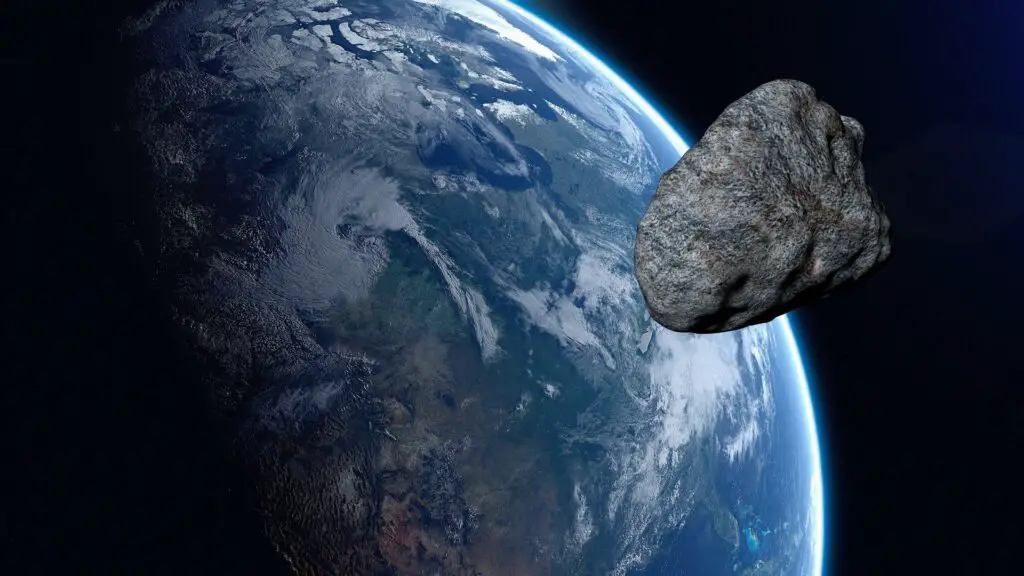Earth is about to experience the biggest asteroid flyby of 2022. Earlier this year, scientists predicted a massive asteroid estimated to be four times bigger than the Empire State Building will fly past Earth on Friday, May 27. Scientists also estimated that this asteroid would fly by earth at a speed of 47,200 mph (76,000 km/h).
What more are you expecting to learn about this asteroid? Can you see it pass over the earth sky? Are there plans to redirect asteroids and protect our planet in the future? You are about to find answers to these questions.
What should you know about this giant asteroid?
On May 1st, 1989, American Astronomer Eleanor Helin used the U.S. Palomar Observatory located in California to discover a giant stony Asteroid. This massive asteroid was classified as a near-Earth object and was identified as (7335) 1989 JA.
Since the asteroid is at a closer location to earth, Scientists are fully aware that the asteroid will head in our direction someday in the future. NASA scientists later revealed that (7335) 1989 JA will fly by the earth on May 27th, at 47,200 mph. During the flyby, the massive asteroid will be traveling 4 million kilometers (2.5 million miles) away from earth.
After this flyby, the rock will not make a close approach to earth until June 23, 2055. During this time, it will fly by earth at a more distanced approach than this month’s flyby. So after the My 27th flyby, the asteroid will stay for 33 years before reaching another closer distance to earth.
NASA revealed that during (7335) 1989 JA’s next approach to earth, it will be traveling at 27 million kilometers (17 million miles) away from earth. At that time, we may have become technologically advanced to watch the flyby directly from every corner of Earth.
What effort are we making to study Near-Earth Objects?
For centuries, astronomers have been studying near-earth objects. Over the years, they have discovered over 29,000 near-earth objects, in which one of them is (7335) 1989 JA. Scientists clearly understand the dangers associated with Earth colliding with asteroids.
So they are more focused to track the movement of these near-earth objects to detect any threat to our planet. However, space agencies like NASA are finding it challenging to track some of these objects because of their tiny shapes. In fact, NASA says that (7335) 1989 JA is almost 99% bigger than most near-earth objects.
So it is much easier to track larger near-earth objects than to track smaller near-earth objects. Since (7335) 1989 JA is a massive asteroid, NASA classifies it as a hazardous asteroid that can create a huge impact if it eventually collides with earth.
Do we have plans to Redirect Asteroids in the Future?
About 66 million years ago, a massive asteroid collided with earth and sent the dinosaurs to extinction. This devastating event caused a serious impact on the earth. Currently, we have over 29,000 near-earth objects, in which NASA labeled 2,265 of them as potentially hazardous asteroids.
Note that (7335) 1989 JA is also part of the hazardous asteroid. If any of these asteroids eventually collide with earth, we will feel the impact across the globe. So space agencies are working hard to ensure that we establish a planetary defense mechanism to protect the earth from an asteroid collision.
On November 24th, 2021, NASA commenced with the Double Asteroid Redirection Test (DART) mission to study how to redirect asteroids and prevent them from colliding with another celestial body. The mission is planned for 11 months.
So at the end of the mission, we will be able to decide on ways to redirect asteroids in the future. CNSA is also working on a similar mission. We hope that they succeed in coming up with great plans to protect our planet from asteroid collisions.
Can we see May 27 the giant asteroid flyby from Earth?
Yes, we can watch the giant asteroid conduct a flyby on earth, but not with our physical eyes. You need to have a sophisticated telescope to watch the asteroid pass earth. However, the Virtual Telescope Project will Livestream their telescope view on their channel. Even if you don’t have a powerful telescope, you can join their lifestream to stay updated on this flyby.
Conclusion
As we watch the (7335) 1989 JA conduct a flyby around the earth, we should prepare our minds for future flyby and ensure our Earth is safe from asteroid collisions. If we figure out how to redirect asteroids through NASA DART missions and the effort made by other space agencies, we can also feel more safe and secure during any asteroid flyby mission to earth. What do you think about Asteroid Flyby to Earth?


NASA should consider on how to invent an asteroid shredder. That is the only way we shall be able to protect our planet from such calamities.
I believe that an asteroid that continues to circle the universe will first hit another planet whether it’s Mars or Pluto for example before hitting the planet Earth. God has arranged the trajectory of the heavenly bodies, so that they do not hit our beloved earth. And thank you for the discovery which of course has added to the wealth of human knowledge.